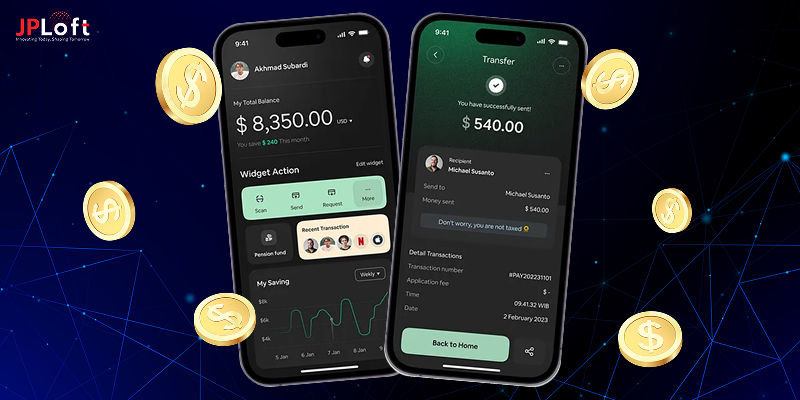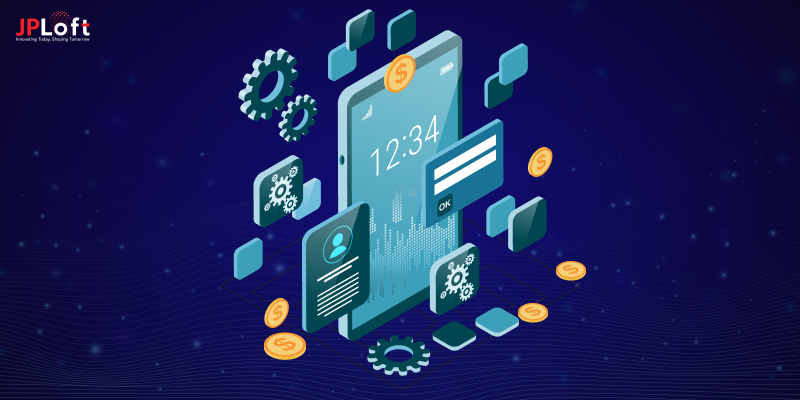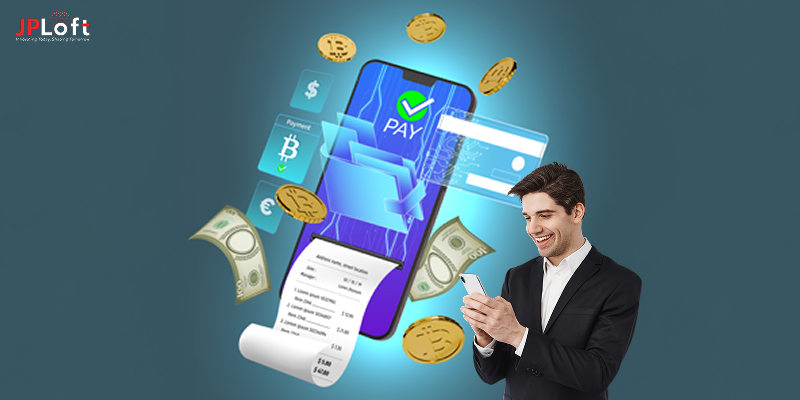Key Takeaways:
The fintech market is growing fast, reaching USD1,126 billion by 2032, hence the apps need the right features to stay competitive.
Must-have fintech app features include secure onboarding, instant transfers, smart dashboards, real-time alerts, and 24/7 support.
Advanced features such as AI-driven insights, blockchain integration, predictive analytics, and gamification help apps stand out.
User panels should focus on daily needs, admin panels on compliance and safety, and agent panels on support and integrations.
Choosing features should be guided by a clear app goal, compliance requirements, trust-building, and long-term scalability.
Partnering with experienced developers ensures your app stays secure, user-friendly, and future-ready.
The global fintech market was valued at USD394.88 billion in 2025 and is projected to reach USD1,126 billion by 2032. These statistics reflect a significant growth opportunity for the fintech entrepreneurs already operating or planning to invest in the fintech sector.
Along with the potential opportunities, these industry stats also indicate the competition that will emerge following the industry statistics.
If you are planning to enter the fintech space, then the competition that you will face is not just based on the number of apps existing in the industry. It also depends on how they are planning to serve the audience and fulfill their set expectations.
Modern-day consumers have high expectations from fintech apps, resulting in making the entire service delivery process more complicated to address.
Features like 2FA, account linking, transaction tracking, digital payments, and biometrics are already present in most of the Fintech apps. But with shifting trends and expectations, the role of AI, blockchain, and high-end app security is transforming the fintech app features.
In this blog, we will discuss the must-have fintech app features to consider if you are building a future-proof fintech app.
Also, the blog will help you understand the key approaches that can help you plan and pick the most suitable features for your fintech app. Let’s proceed.
What is a Fintech App?
A fintech app can be defined as a platform that aims to offer financial services to users digitally. By the name itself, it is an abbreviation of finance + technology.
The emergence of the fintech app sector has significantly revolutionized the sector and how users engage in financial transactions. It can be mentioned that these tech upgrades to traditional banking have resulted in improved convenience for both businesses and consumers.
Further, the emerging trends of AI in finance, blockchain, personalization, and more are expected to introduce further transformations. Hence, the fintech entrepreneurs are required to plan for key fintech app features that they should have in their app to retain their competitiveness.
Must-Have Fintech App Features
When you are planning to build a fintech app, preparing a feature checklist is the most important aspect to focus on.
The success of every fintech app depends on a strong foundation, which is shaped by the selection of key features that can contribute to both, i.e., user convenience and app growth.
So, let’s focus on the key fintech app features that are a must-have or the basics when you are planning to build the app.
A] Simple and Secure Onboarding
Having a convenient and easy sign-up process is crucial for a fintech app to attract new users. When signing up for the first time, users must be able to conveniently verify their identity, submit relevant documents, and use the app within minutes.
A smooth onboarding acts as a first impression of your fintech app and decides whether a user will stay or drop off, even before using your app.
B] Intuitive Dashboard and Navigation
To retain a user, it is important to have a clean and well-organized interface that can build user confidence.
Your fintech app should have clear navigation to categories such as spending, investment, and savings. Such an approach helps users feel that they have control over their finances and encourages daily engagement.
C] Instant Transfers and Bill Payments
With the emerging tech and expanding fintech landscape, almost every banking and financial institution is connected to a digital environment somehow.
Hence, in such a scenario, no user likes waiting for their money; they look for real-time transfers and bill payment options. Whether they are looking to send money to their friends, pay bills, or split expenses, everything needs to happen quickly and in real time.
D] Secure Login and Authentication
Security is the core of any fintech application. The fintech apps collect users' personal and financial details, so they must have biometric login, multifactor authentication, and data encryption.
These features are essential to evoke a sense of trust and security among the users and ensure that they use the app more.
E] Real-Time Alerts and Notification
The fintech app should keep its users informed about deposits, spending, and any suspicious activity. These notifications provide users a peace of mind and improve their trust in the fintech app.
These alerts also indicate that the fintech app values and tracks each user, and hence they tend to stay longer.
F] Profile Management and Account Linking
Further, a must-have feature for fintech apps is profile management and multiple account linking. Your fintech app must have a user section that allows them to amend basic details such as profile picture, username, and more.
These features allow users to have control over how their profile on it appears to others, and hence they feel more comfortable.
G] Expense Tracking and Budgeting Tools
An essential fintech app feature is expense tracking, as money management is one of the core reasons people download fintech apps. Features like a budget planner, categorized spending, and a monthly summary help users stay financially aware.
Also, these features help users cut unnecessary expenses and achieve their financial goals in due time.
H] In-App and 24×7 Customer Support
Chatbots and automation are making it possible to offer real-time and 24×7 support. But even along with such automation, it is important to retain a human touch in cases where something goes wrong.
Such an approach allows users to get a solution to their concerns in real time without leaving the platform. Hence, such an approach helps build and strengthen the brand-customer relations.
Advanced Fintech Apps Features For 2025 and Beyond
The basic or must-have features are essential to launch the app and to attract users initially. But to establish your competitiveness and to retain your users, it is important to focus on key industry trends and the advanced features that can help your app to stand out.
These advanced features are based on AI, automation, blockchain, and data analytics to deliver personalized, predictive, and secure financial experiences. These advanced features are not just about convenience anymore. But is about giving users more control, insight, and value.
Let’s focus on such advanced features that you should plan to have in your fintech app.
1. AI-Powered Financial Insights
Artificial Intelligence is transforming how people plan their expenses and budgets. AI focuses on real-time user data to offer useful insights to the users.
The fintech apps, with the help of AI, analyze users’ spending patterns, forecast their saving potential, and accordingly suggest investment options. These smart insights turn raw financial data into actionable advice, helping users make confident decisions.
2. Predictive Analytics For Smarter Planning
Fintech app features are shifting from simply tracking users' expenses and savings. But along with such, they have started predicting what users will require next.
From anticipating future bills or potential cash shortfalls to sending timely reminders and suggestions, such a predictive approach helps a user better plan their finances.
3. Blockchain and Crypto Integrations
Blockchain in fintech is transforming the mobile app security features and is becoming a part of mainstream fintech.
The industry players like Cash App and Robinhood are key industry examples that utilize such blockchain technologies and let users buy, sell, and hold cryptocurrencies directly from their accounts.
4. Robo-Advisory and Automated Investment
In fintech apps, automation is playing a significant role. From notifying users of their regular habits to reshaping wealth management, the adoption of automation in fintech needs to be considered.
Another key feature trend to be considered is the Robo-advisory in fintech. These robo-advisors are responsible for automatically diversifying users’ portfolios, rebalancing assets, and reinvesting dividends based on users’ goals and risk preferences.
5. Voice and Chatbot Banking
Conversational interfaces are making fintech apps more human. Users can now perform basic functions like balance check, making payments, or asking for financial advice through chat or voice commands.
The banking and fintech apps are blending AI and natural language processing to create an instant, conversational banking experience. Such includes voice payments, conversational banking, and more.
6. Open Banking and API Integrations
A feature that modern users expect to have in a fintech or banking application is linking multiple bank accounts and services in one unified dashboard.
Such a feature allows users to view all their financial data and provides them with a 360-degree view of their financial health. Such linking allows users to connect credit cards, bank accounts, and investment portfolios securely in a single app.
7. Gamified Experiences
Gamification is a key feature that is transforming user engagement in fintech apps. The fintech apps are using achievements, levels, and visual progress bars to motivate better financial habits.
The gamification features are helping fintech banks improve user engagement and make finance fun and goal-driven.
8. Global and Multi-Currency Transactions Support
The fintech landscape is expanding globally, with no need to be physically present for both users and financial institutions. Hence, the modern-day fintech apps are increasingly serving users who live, work, or invest internationally.
These features make financial life smoother for travelers, freelancers, and global users.
Panel-Wise Features For A Successful Fintech App
Building a fintech app requires you to focus on multiple layers or panels. It is important because a fintech app at a point in time is being used by diverse users, i.e., a consumer, an admin, and an agent/partner.
Accordingly, they expect an interface designed with features that are relevant to their use case. These interfaces can be defined as panels, and each panel serves a purpose.
The user panel focuses on everyday needs. The admin panel keeps things running safely. The agent or partner panel makes sure that help and integrations work smoothly. Together, they create the full app experience.
Let’s look at the features of each of these panels individually:
1. User Panel Features
This is the interface that customers see and use daily. A good user panel makes money easy to manage and safe to move, and most importantly, keeps users engaged.
► Easy sign-up and ID checks
A key feature to have in the user panel is easy sign-ups and a secure user verification system. Modern-day apps now use face scans, ID photos, or bank connectors to make sign-up quick.
► Instant money transfers
Another essential feature to have is offering instant money transfer. People expect money to move in seconds, not days. Hence, the fintech apps are integrating key banking APIs and partnering with platforms to facilitate such smooth transfers.
► Smart card controls
The user panel needs to have smart card controls that can protect virtual cards, one-time cards, and offer freeze buttons to protect users from fraud.
► Multi-currency wallets
Travelers and freelancers want to hold and spend in more than one currency, hence they look for multicurrency wallets. The fintech apps are making this convenient by letting users keep balances in different currencies with fair exchange rates.
► Strong safety alerts
Strong authentication is the key feature of any fintech app. Quick fraud alerts, biometric approvals, and easy dispute filing build trust.
2. Admin Panel Features
As the user panel leads the fintech app, the admin panel sits in the background. It helps teams control operations, follow rules, and solve issues fast.
► Live transaction monitoring
The feature that allows admins to spot risky payments or fraud patterns in real time. Such a feature is important to keep the platform safe and secure for all users.
► Built-in compliance tools
A key admin panel feature that fintech apps focus on is the built-in compliance tools. With rules like PCI DSS 4.0 starting in March 2025 and DORA in Europe, admins need quick reports and audit-ready data. Modern dashboards make that possible.
► Emergency controls
The admin panel needs to have a feature of emergency controls. Such can help detect fraud spikes, and admins should be able to pause payments by region or merchant type.
With emerging technologies in fintech, such as blockchain in loan lending apps, these emergency controls are being automated to respond more quickly and in real-time.
► Clear payout and settlement view
Admins need to know when money moves out and when it reaches accounts. Hence, having unified dashboards makes reconciliation easier by showing instant versus standard payouts.
3. Agent and Partner Panel Features
This panel is designed for the people who work directly with customers or build integrations. It’s about giving them the right context and tools.
► Customer support view
Agents should see a user’s last transactions, account status, and device history all in one place. Such an approach helps agents provide better and real-time support to the users.
► Dispute handling
The agent panel should have a feature of real-time dispute handling. When users file chargebacks or disputes, agents need guided flows and upload tools. The modern-day fintech tools are providing teams with ready-made templates to handle this smoothly.
► Partner and developer access
Fintech apps focus on partnering with other service providers to offer a comprehensive experience to users. That’s why APIs, test environments, and clear dashboards matter. These features elevate the overall user experience.
► Performance tracking for partners
The fintech app should have performance tracking features for its partners. Channel partners need to see their referrals, commissions, and customer feedback.
How To Choose The Right Fintech App Features?
Building a successful fintech app is not just about adding as many possible features. But selecting the right features that make the app simple, safe, and ready to grow.
The best way to choose your fintech app features is to partner with an experienced mobile app development company in Denver
Integrating unnecessary features can confuse users or create problems later. You can further focus on the following approaches to choose is to focus on what people really need and what rules you must follow.
A] Start With the Main Goal
Every fintech app starts with an aim to solve a clear problem. Some apps help people save money. Others focus on sending money quickly. Some are built for credit and lending.
Hence, it is important to define your app's goal. Once it's defined, it becomes easier to pick the first set of features.
For example, A savings app may need tools that help people set goals and track progress. A payment app may need instant transfers and strong security.
B] Cover the Basics First
There are some basic or must-have features that users now expect to be present in every fintech app. Such features include an easy sign-up process, biometric login, real-time alerts, and notifications.
These are not the features that are restricted to innovative or large-scale apps anymore. They are the basics that build trust. If an app does not have them, people may stop using it, no matter how advanced the other features are.
C] Follow the Rules
Fintech is one of the highly regulated sectors globally. This means fintech app compliance and rules are strict, and they change often. Due to such, it becomes important for the apps to have identity checks, safe data storage, and ways to track transactions.
New updates like PCI DSS 4.0 or open banking rules in the US and Europe show that compliance cannot be skipped. Ignoring compliance results in facing heavy penalties, and hence, it may cost more later to fix mistakes than the initial cost to build a mobile app with planned features.
The features like data safety, user privacy, and other factors are mandatorily required as per the rules and compliance.
D] Balance Safety and New Ideas
Adding new and innovative features to your fintech app is both i.e. tempting for the entrepreneurs and helps get audience attention. But when doing so, safety has to come first. Users will not trust the app if they do not feel their money is safe.
Hence, such reflects that your fintech app has features like clear safety alerts, the option to freeze or block accounts, and honest information about fees.
Once users feel secure, they are more open to exploring new tools like multi-currency wallets, instant payouts, or investments. Trust makes innovation possible.
E] Plan for App Scalability
When selecting your fintech app features, also focus on its long-term scalability. A successful fintech app should work today, but also be able to keep pace with the transforming scenario.
Start with the most important features and then expand over time. A money app can launch with simple transfers, then add global payments later. For instance, A savings app might begin with basic goal setting, then offer investment options as the user base grows.
Adding features step by step keeps the app simple for new users while making it stronger over time. Also, plan for a solid app tech stack that can support such current and future feature upgrades.
How JPLoft Can Help Build A Feature-Rich Fintech App?
The success of any fintech app depends on its features. Hence, when planning for a fintech app, it is also important to prepare a detailed feature checklist that can guide you on what to include and what to keep aside for the next app upgrade.
Hence, in this process of deciding and planning app features, it is important to connect with experienced developers who better understand the fintech space and can help you.
Partnering with JPLoft, an experienced Fintech App Development Company, can help you get a fintech app that is safe, secure, and scalable. Also, they can help you with every basic and advanced feature that needs to be incorporated in your fintech app.
The developers at JPLoft are well aware of the current as well as the emerging fintech trends and can help you finalize features that your fintech app should have.
Not only the development, but also the developers assist you with your app maintenance and timely upgrades to ensure that any new feature can be added to your app.
Conclusion
Fintech apps are no longer just about offering a platform to users to perform their daily transactions. These apps now shape how people save, spend, and trust digital finance in 2025.
Hence, the best fintech apps should focus on must-have basics like secure sign-up and instant transfers, with advanced features that fit user needs.
Choosing the right features means starting with a clear purpose, following rules, and building for growth. With the right balance, a fintech app can stand out, stay compliant, and win long-term trust from both users and businesses.
FAQs
The must-have or basic features that every fintech app should start with include easy sign-up, biometric login, instant transfers, fraud alerts, and easy account controls. Without these, users may not trust the app.
There is no set limit for the minimum number of features to have in your fintech app. Start with an MVP and then, depending on audience response or your app performance, you can plan to add more features to it.
Having advanced features or not depends mainly on your fintech app goals. Advanced features like multi-currency wallets or investment tools add value but should come after the core basics are in place. Also, these are to be implemented if your audience is expecting such features from your app.
You can choose the right features by focusing on the problem you want to solve, covering the basics, following regulations, and planning for future growth.
Compliance is essential as it ensures that your app follows financial rules, protects users, and avoids penalties. It also helps you build trust with your industry stakeholders and scale your app without any complications.












Share this blog